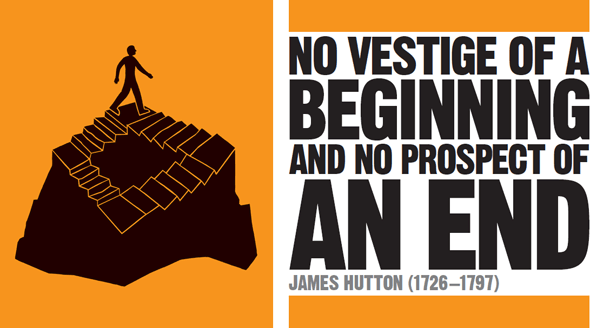
IN CONTEXT
Geology
10th century Al-Biruni uses fossil evidence to argue that land must once have been under the sea.
1687 Isaac Newton argues that Earth’s age can be calculated scientifically.
1779 The Comte de Buffon’s experiments suggest an age of 74,832 years for Earth.
1860 John Phillips calculates Earth’s age at 96 million years.
1862 Lord Kelvin calculates Earth’s cooling to produce an age of 20–400 million years, later settling on 20–40 million.
1905 Ernest Rutherford uses radiation to date a mineral.
1953 Clair Patterson puts Earth’s age at 4.55 billion years.
For millennia, human cultures have pondered the age of Earth. Before the advent of modern science, estimates were based on beliefs rather than evidence. It was not until the 17th century that a growing understanding of Earth’s geology provided the means to determine the planet’s age.
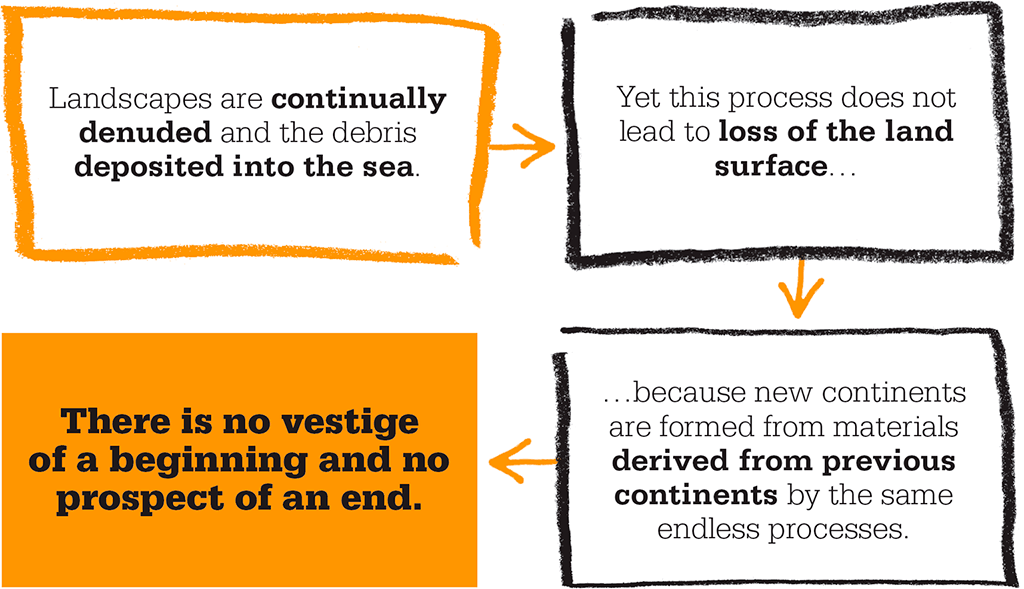
Biblical estimates
In the Judaeo-Christian world, ideas about Earth’s age were based on descriptions in the Old Testament. However, since these texts only presented the creation story in brief outline, they were subject to much interpretation, especially over the complex genealogical chronologies that followed the appearance of Adam and Eve.
Best known of these Biblical calculations is that by James Ussher, the protestant Primate of all Ireland. In 1654, Ussher pinpointed the date of Earth’s creation to the night preceding Sunday 23 October 4004 BCE. This date became virtually enshrined in Christian culture when it was printed in many Bibles as part of the Old Testament chronology.
"All the years from the creation of the world amount to a total of 5,698 years."
Theophilus of Antioch
A scientific approach
During the 10th century CE, scholars in Persia began to consider the question of Earth’s age more empirically. Al-Biruni, a pioneer of experimental science, reasoned that if marine fossils were found on dry land, then that land must once have been under the sea. Earth, he concluded, must be evolving over long periods of time. Another Persian scholar, Avicenna, suggested that layers of rock had been laid down one upon another.
In 1687, a scientific approach to the problem was suggested by Isaac Newton. He argued that it would take a large body like Earth about 50,000 years to cool if it were made of molten iron. He derived this figure by scaling up the cooling time taken for a “globe of iron of an inch in diameter, exposed red hot to open air”. Newton had opened the door to a scientific challenge to previous understandings of Earth’s formation.
Following Newton’s lead, French naturalist Georges-Louis Leclerc, Comte de Buffon, experimented with a large ball of red-hot iron, and showed that if Earth were made of molten iron, it would take 74,832 years to cool. In private, Buffon thought that Earth must be far older, since aeons of time would be needed for chalk mountains to build up from the remains of marine fossils, but he did not want to publish this view without evidence.
Secrets of the rocks
In Scotland, quite a different approach to the problem of Earth’s age was being taken by James Hutton, one of the pre-eminent natural philosophers of the Scottish Enlightenment. Hutton was a pioneer of geological fieldwork, and used field evidence to demonstrate his arguments to the Royal Society of Edinburgh in 1785.
Hutton was impressed by the apparent continuity of the processes by which landscape was denuded and its debris deposited into the sea. And yet all these processes did not lead to loss of the land surface, as might be expected. Perhaps thinking of the famous steam engine built by his friend James Watt, Hutton saw Earth as “a material machine moving in all its parts”, with a new world constantly reshaped and recycled from the ruins of the old.
Hutton formulated his Earth-machine theory before he had found the supporting evidence, but, in 1787, he found the “unconformities” he was looking for – breaks in the continuity of sedimentary rocks. He saw that much of the land had once been seabed, where layers of sediment had been laid down and compressed. In many places these layers had been pushed upwards, so that they were above sea level, and often distorted, so that they were not horizontal. He repeatedly found that rock material from the truncated upper boundary of older strata was incorporated into the base of the younger rocks above.
Such unconformities showed that there had been many episodes in Earth’s history when the sequence of erosion, transport, and deposition of rock debris had been repeated, and when rock strata had been moved by volcanic activity. Today, this is known as the geological cycle. From this evidence, Hutton declared that all continents are formed from materials derived from previous continents by the same processes, and that these processes still operate today. Famously, he wrote that “the result, therefore, of this present enquiry is, that we find no vestige of a beginning – no prospect of an end”.
The popularization of Hutton’s ideas about “deep time” was primarily due to John Playfair, a Scottish scientist who published Hutton’s observations in an illustrated book, and to British geologist Charles Lyell, who transformed Hutton’s ideas into a system called uniformitarianism. This held that the laws of nature have always been the same, and therefore the clues to the past lie in the present. However, while Hutton’s insights concerning the antiquity of the planet rang true to geologists, there was still no satisfactory method of determining just how old the planet was.
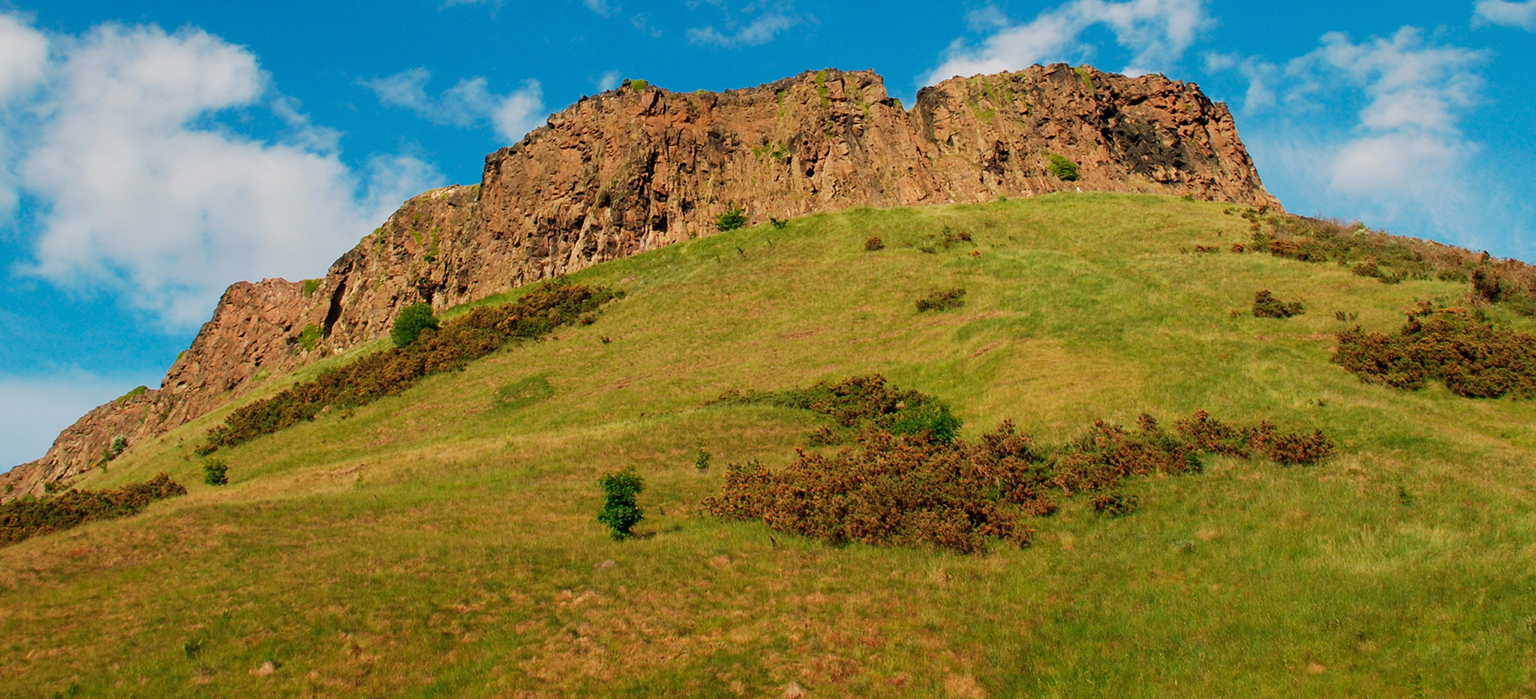
In 1770, Hutton built a house overlooking Salisbury Crags in Edinburgh, Scotland. Among the crags he found evidence of volcanic penetration through sedimentary rock.
An experimental approach
Since the end of the 18th century, scientists had recognized that Earth’s crust comprises successive layers of sedimentary strata. Geological mapping of these strata revealed that cumulatively they are very thick and many contain the fossil remains of the organisms that lived in their respective depositional environments. By the 1850s, the geological column of strata (also known as the stratigraphic column) had been more or less carved up into some eight named systems of strata and fossils, each of which represented a period of geological time.
Geologists were impressed by the overall thickness of the strata, estimated to be 25–112km (16–70 miles) thick. They had observed that the processes of erosion and deposition of the rock materials that make up such strata were very slow – estimated to be a few centimetres (inches) every 100 years. In 1858, Charles Darwin made a somewhat ill-judged foray into the debate when he estimated that it had taken some 300 million years for erosion to cut through the Tertiary and Cretaceous period rocks of the Weald in southern England. In 1860, John Phillips, a geologist at Oxford University, estimated that Earth is about 96 million years old.
But in 1862, such geological calculations were scorned by the eminent Scottish physicist William Thomson (Lord Kelvin) for being unscientific. Kelvin was a strict empiricist and argued that he could use physics to determine an accurate age for Earth, which he thought was constrained by the age of the Sun. Understanding of Earth’s rocks, their melting points and conductivity, had vastly improved since Buffon’s day. Kelvin took Earth’s initial temperature at 3,900°C (7,000°F) and applied the observation that temperature increases as you go downwards from the surface – by about 0.5°C (1°F) over every 15m (50ft) or so. From this, Kelvin calculated that it had taken 98 million years for Earth to cool to its present state, which he later reduced to 40 million years.
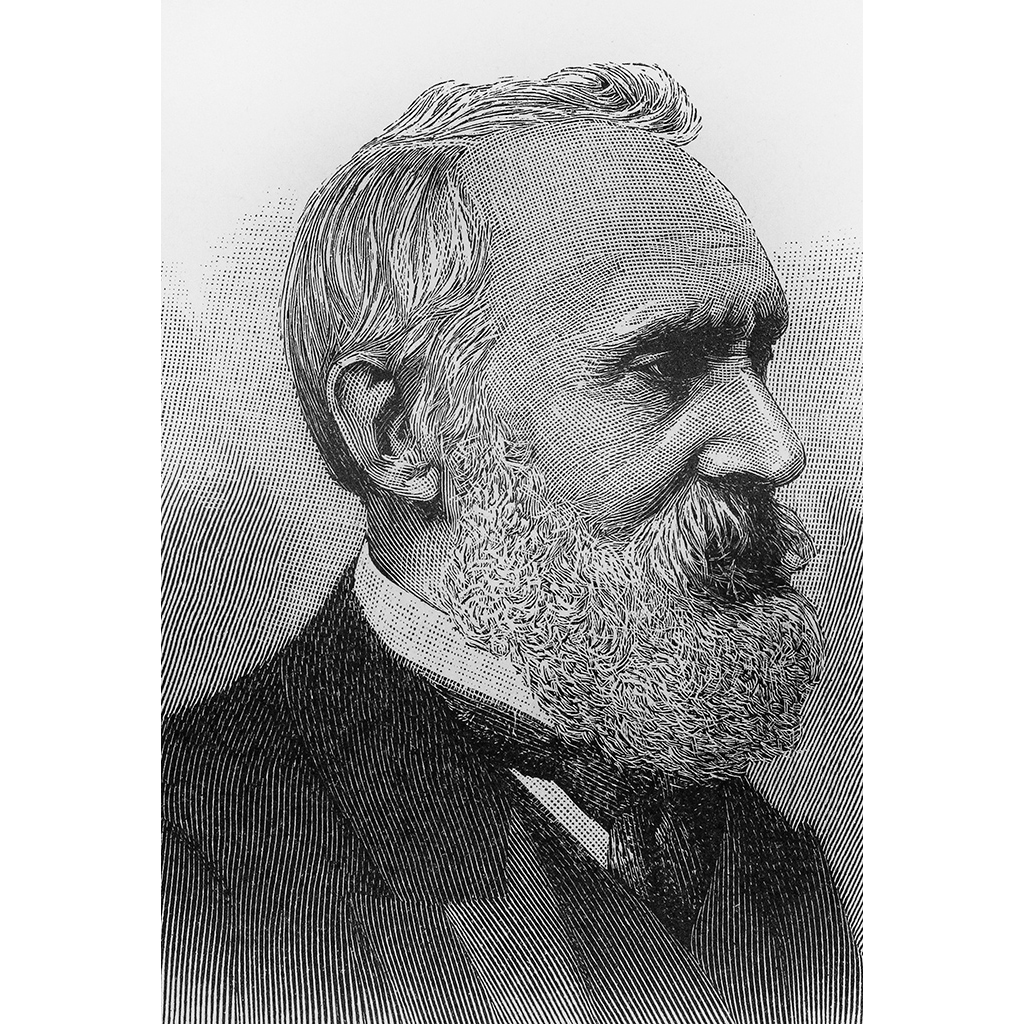
Lord Kelvin pronounced the world to be 40 million years old in 1897, the year in which radioactivity was discovered. He did not know that radioactive decay in Earth’s crust provides heat that greatly slows the rate of cooling.
"The mind seemed to grow giddy by looking so far into the abyss of time."
John Playfair
A radioactive “clock”
Such was Kelvin’s prestige that his measure was accepted by most scientists. Geologists, however, were left feeling that 40 million years was simply not long enough for the observed rates of geological processes, accumulated deposits, and history. However, they had no scientific method with which to contradict Kelvin.
In the 1890s, the discovery of naturally occurring radioactive elements in some of Earth’s minerals and rocks provided the key that would resolve the impasse between Kelvin and the geologists, since the rate at which atoms decay makes a reliable timer. In 1903, Ernest Rutherford predicted rates of radioactive decay and suggested that radioactivity might be used as a “clock” to date minerals and the rocks that contain them.
In 1905, Rutherford obtained the very first radiometric dates of formation for a mineral from Glastonbury, Connecticut: 497–500 million years. He warned that these were minimum dates. In 1907, American radiochemist Bertram Boltwood improved on Rutherford’s technique to produce the first radiometric dates of minerals in rocks with a known geological context. These included a 2.2-billion-year-old rock from Sri Lanka, whose age increased previous estimates by an order of magnitude. By 1946, British geologist Arthur Holmes had made some isotope measurements from lead-bearing rocks from Greenland, which gave an age of 3.015 billion years. This was one of the first reliable minimum ages for Earth. Holmes went on to estimate the age of the uranium from which the lead was derived, obtaining a date of 4.46 billion years, but he thought that must be the age of the gas cloud from which Earth formed.
Finally, in 1953, American geochemist Clair Patterson obtained the first generally accepted radiometric age of 4.55 billion years for Earth’s formation. There are no known minerals or rocks dating from Earth’s origin, but many meteorites are thought to originate from the same event in the Solar System. Patterson calculated the radiometric date for lead minerals in the Canyon Diablo meteorite at 4.51 billion years. Comparing it with the average radiometric age of 4.56 billion years for granite and basalt igneous rocks in Earth’s crust, he concluded that the similarity of dates was indicative of the age of Earth’s formation. By 1956, he had made further measurements, which increased his confidence in the accuracy of the date of 4.55 billion years. This remains the figure accepted by scientists today.
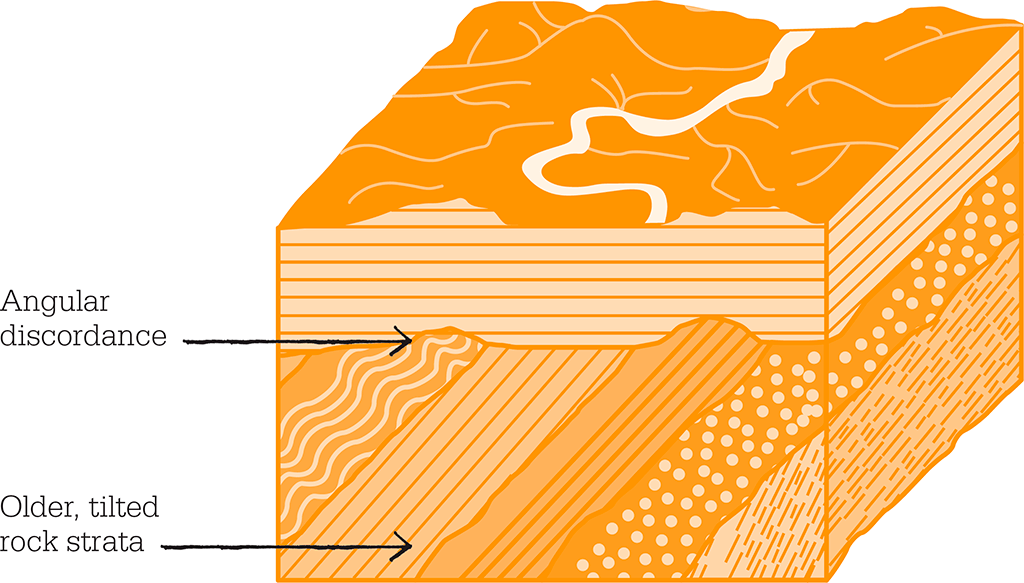
An uncomformity is a buried surface separating two rock strata of different ages. This diagram shows an angular unconformity, similar to those discovered by James Hutton on the east coast of Scotland. Here, layers of rock strata have been tilted by volcanic activity or movements in Earth’s crust, producing an angular discordance with overlying, younger layers.
"The past history of our globe must be explained by what can be seen to be happening now."
James Hutton
JAMES HUTTON

Born in 1726 to a respected merchant in Edinburgh, Scotland, James Hutton studied humanities at Edinburgh University. He became interested in chemistry and then medicine, but did not practise as a doctor. Instead, he studied the new agrarian techniques being used in East Anglia, England, where his exposure to soils and the rocks they were derived from led to an interest in geology. This took him on field expeditions all over England and Scotland.
Returning to Edinburgh in 1768, Hutton became acquainted with some of the major figures of the Scottish Enlightenment, including the engineer James Watt and the moral philosopher Adam Smith. Over the next 20 years, Hutton developed his famous theory of Earth’s age and discussed it with his friends before finally publishing a long outline in 1788 and a much longer book in 1795. He died in 1797.
Key work
1795 Theory of the Earth with Proofs and Illustrations
See also: Isaac Newton • Louis Agassiz • Charles Darwin • Marie Curie • Ernest Rutherford